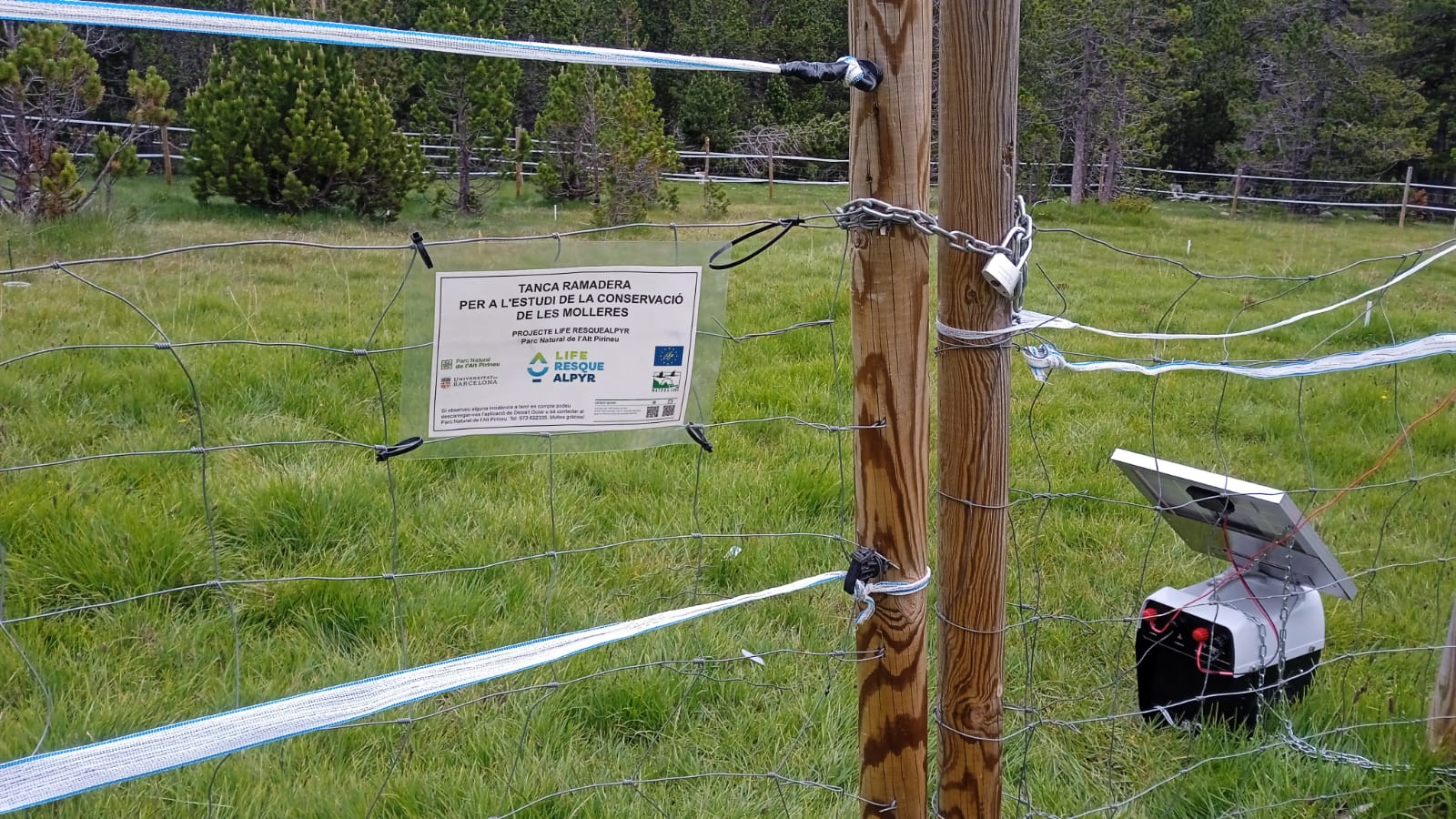On April 24th, the conference “Overgrazing and Reforestation in the Pyrenees Mires” was held, led by Aaron Pérez Hase and Eulàlia Pladevall Izard, researchers from the University of Barcelona and the LIFE RESQUE ALPYR project
The talk is part of the conference and field trip program of the seminar “Prats i pastures, espais de biodiversitat” organized by the Cultural Department of the Ajuntament de Mataró and the Delegació de la Serralada Litoral Central (ICHN).

On a biosphere scale, mires are among the ecosystems experiencing the most significant deterioration, loss, and degradation. It is expected that this negative trend will persist.
In the Pyrenees and the Alps the main threats are:
- Overgrazing by Livestock Excessive
Trampling damages the surface, soil structure, and the delicate vegetation found in these ecosystems. Furthermore, intensive herbivore activity adversely impacts species growth, and an excess of nutrients leads to alterations in the chemical composition of mire waters.
- Changes in the Hydrological Patterns of Valleys
Whether as a consequence of climate change (resulting in longer drought periods) or due to the construction of human-made structures such as dams or other hydroelectric infrastructure, the circulation of water that feeds the mires can be affected.

According to the United Nations peat bogs, mangroves, and seagrass meadows are the Earth’s most effective carbon sinks. They capture and store twice as much carbon as all the world’s forests combined.
If you are interested in learning more details about these ecosystems, you can download the following brochure of the project about mires.




